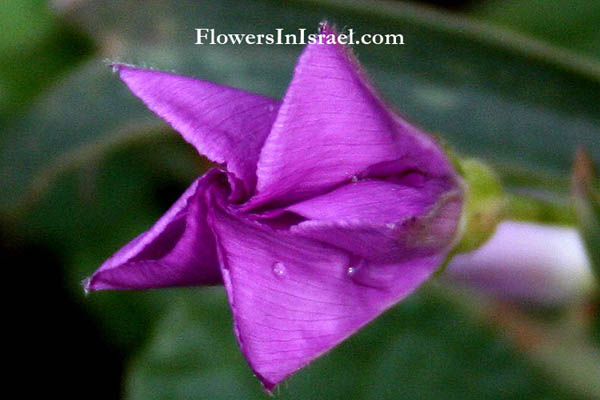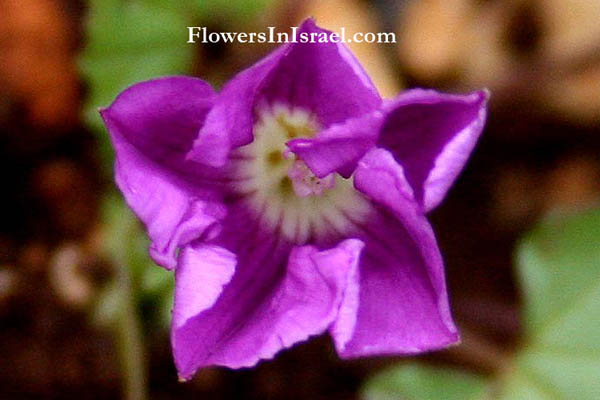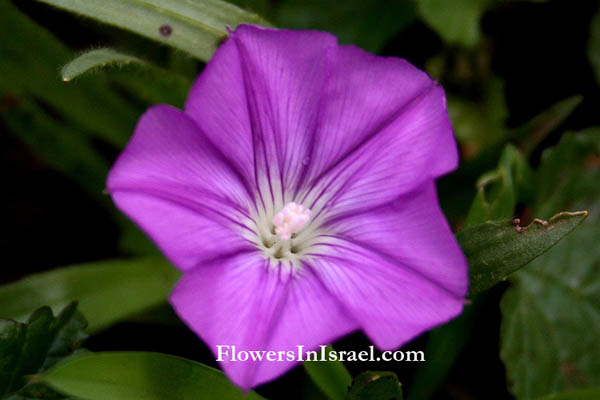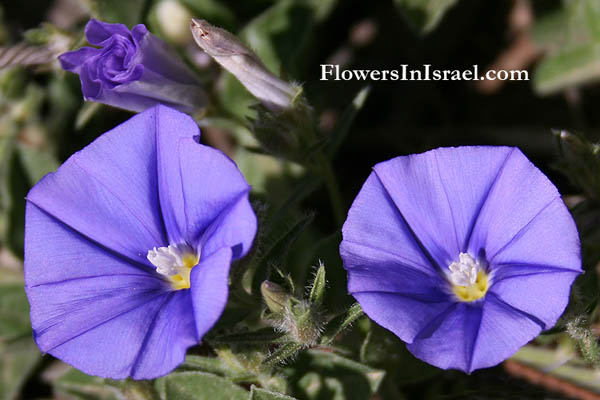חבלבל סיצילי
| Scientific name: | Convolvulus siculus L. | |
| Common name: | Blue Bindweed, Small Blue Convolvulus | |
| Hebrew name: | חבלבל סיצילי | |
| Plant Family: | Convolvulaceae, חבלבליים |

|
| Life form: | Therophyte, annual | |
| Stems: | Trailing; stems filiform, angular, beset with adpressed hairs above, and spreading once at bottom; stems twining a little | |
| Leaves: | Alternate, entire | |
| Flowers: | Pink, violet; small corolla with a white throat | |
| Fruits / pods: | Capsule | |
| Flowering Period: | February, March, April, May | |
| Habitat: | Batha, Phrygana | |
| Distribution: | Mediterranean Woodlands and Shrublands, Semi-steppe shrublands, Deserts and extreme deserts | |
| Chorotype: | Mediterranean | |
| Summer shedding: | Ephemeral |

Derivation of the botanical name: Convolvulus, Latin, convolvere, "to twine around"; "a bindweed" (Plinius), from convolvo, volvi, volutum, ere "to droll together, roll up, intertwine." siculus, of Sicily. The Hebrew word chavalval, חבלבול. Shaul Tchernichovsky (1875 – 1943), poem: "You Are So Fragrant" (19.7.1929):... ניחוחם של חבלבלים, nichucham shel chavalvalim, fragrance of Convolvulus (Tchernichovsky's Note: chavalval, חבלבול, Convolvulus L. Winde, Bindweed, Вьюнок).


|